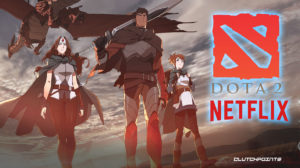Vaccination efforts in the poorest countries against Covida-19 have slowed, leaving many countries with weakened protection against the coronavirus just as the burden of the pandemic shifts from the developed to the developing world.
An initiative supported by the World Health Organization and rich countries to provide free vaccines to 92 low- and middle-income countries has recently reduced the number of vaccines to be delivered by the end of May. The initiative, called Kovacs, will provide 145 million doses instead of about 240 million as India, the main supplier, has largely halted exports of the vaccines to cope with the rising number of cases in the country.
This further widens the already huge immunization gap between rich and poor countries. While more than 200 million doses have already been administered in the US, Kovacs has so far delivered less than 41 million of the two billion doses expected by the end of 2021.
The slow introduction of Covid-19 vaccines in developing countries could pose problems for the rest of the world. Epidemiologists believe that the lack of vaccination in much of the developing world allows a large reservoir of the coronavirus to remain in circulation, giving the virus the opportunity to mutate and eventually spread to the developed world.
Most of the Covax vaccines planned for the first half of the year would be produced by the world’s largest vaccine manufacturer, the Serum Institute of India, which has a partnership with the
AstraZeneca
PLC for the production of the vaccine that the company has developed with the University of Oxford. SII says its production is also limited by U.S. restrictions on exports of key raw materials for vaccines, an attempt by Washington to speed up production in the country.
Uncertainties complicate planning.
Officials from the African Centers for Disease Control and Prevention and WHO recently suggested that governments consider reaching as many people as possible with the first vaccination, even if it means delaying the second dose and despite the lack of clear data on declining effectiveness without the booster.
We are in a dilemma as a continent,
John Nkengasong,
the head of the African CDC, said last week. We cannot predict when the second doses will come, and that is not good for our vaccination program. Dr Nkengasong added that even without the booster vaccination, one dose of AstraZeneca’s vaccine should provide protection against severe covid-19.
At the same time, other countries are trying to use the few vaccines they have.

People wait for a vaccine injection from AstraZeneca at the Mulago clinic in Kampala.
Photo:
Badru katumba/ Agence France-Presse/Getty Images
Health officials say one reason for the low demand for the vaccine in some countries is a decision by some European countries to restrict the use of AstraZeneca’s vaccine for young people because of reports of a rare but serious blood clotting disorder. Last week, U.S. health officials also halted the rollout of a vaccine that
Johnson & Johnson
if they follow up on reports like this. Kovacs and African Union placed significant orders for J&J inputs in the second half of the year.
There is a lot of misinformation and these negative reports, especially in Europe and America, are the main reason why our vaccinations are so slow to take off, says Diana Atwin, permanent secretary at the Uganda Ministry of Health. Enthusiasm is low because people have been told the wrong things about the vaccine. In Uganda, a country of 45 million people, only just over 200,000 of the 964,000 doses were injected in March.
Insufficient investment in immunization logistics, including communication of information to the public, also delays implementation.
As highly transmissible variants of coronavirus spread around the world, scientists are trying to understand why these new versions of the virus are spreading faster and what this may mean for vaccination efforts. New research suggests that the rosehip protein, which gives the coronavirus its distinctive shape, could be the key. Illustration: Nick Collingwood/WSJ
The US health organization CARE estimates that for every dollar governments spend on vaccine doses, they need to invest an additional five dollars to get the vaccine to people, including salaries for health workers, education campaigns and cold chain logistics.
But Covax, a body set up to help countries prepare to use vaccines, has received only about $600 million, leaving a $7.3 billion gap for this year, and the World Bank has allocated only $2 billion of a $12 billion financing package to help countries purchase and distribute vaccines and strengthen their health systems.
About $9 billion has been given to Covax for vaccine purchases, although large purchases by rich countries mean that most doses will not be available until later this year.
In Uganda, the authorities advertise vaccinations, but the posters and signs used in previous vaccination campaigns, especially against measles and polio, have disappeared. Outside the capital Kampala, elderly people often have no transport to vaccination centres. The high percentage of illiterates also means that some people have trouble reading the consent forms they are asked to sign, health officials said.

Medical personnel attend the opening ceremony of the central vaccine storage facility in Luanda, the capital of Angola, after the first Covacs injections arrived.
Photo:
amperrogerio/Shutterstock
If we had access to more money, we could speed up the process, said Vera Daves, Angola’s finance minister, who has used less than half of her Kovacs buses.
WHO and other organizations are adjusting their guidelines to reflect supply shortages. In a paper published last month on the International Vaccine Network, WHO suggested that countries relying on Kovax should focus on providing the first dose to as many people as possible, even at the risk of delaying the second dose beyond the recommended 12 weeks.
This would have significantly increased the number of deaths prevented, the press release said. However, the WHO also states that vaccine-induced antibody levels dropped by about a third at 90 days after the first dose. It provides limited data on what happens to the effectiveness of the vaccine during the follow-up period.
Tulio de Oliveira, a geneticist at the Nelson Mandela School of Medicine in South Africa, said the risk of the vaccine becoming less effective without a timely booster is particularly high for countries dealing with variants that can escape antibodies from previous infections or vaccinations, such as those first discovered in South Africa and Brazil and spreading rapidly to neighboring countries.
But he added: If it’s a choice between no vaccine and a vaccine… then on an individual level there is nothing to lose. What could be lost is confidence in vaccines.
Covid-19 in the Third World
Covax’s current delivery plans envisage resumption of shipments from India in June, but SII said this was dependent on the decline of the Indian caseload. Last week, Kovacs delivered less than a million cans. On Monday, the WHO said it was still in talks with the Indian government and had no clear indication of when supplies would resume or how many doses would be released.
Some countries are already looking for others. Indonesia, which has recorded more cases and deaths from Covida-19 than any other country in East Asia, has asked Beijing to provide 100 million additional doses of vaccine from China, on top of the 125 million already ordered.
Earlier this month, Indonesia’s Health Minister
Budi Gunadi Sadikin
According to the government, the issue of vaccine delivery has been discussed directly with the head of Gavi, one of the groups behind Covax, as well as with AstraZeneca, which has also delayed orders. The Chinese have been the most consistent in keeping their promises, Sadikin said.

A health worker administers the Chinese vaccine Sinovac to a teacher in South Sulawesi, Indonesia.
Photo:
Moh Farabi Vardana/Zuma Press
Write to Gabriele Steinhauser at [email protected], Nicholas Barillo at [email protected], and John Emont at [email protected].
Copyright ©2020 Dow Jones & Company, Inc. All rights reserved. 87990cbe856818d5eddac44c7b1cdeb8
Related Tags:
Feedback,Privacy settings,How Search works,vaccine nationalism threatens global plan to distribute covid 19 shots fairly,most people are primarily concerned about covid-19 they hope for a vaccine,why vaccine nationalism’ could doom plan for global access to a covid-19 vaccine,vaccine inequality between rich and poor countries,will politics at home hurt the g 7’s goal of providing vaccine doses to the developing world,what are the issues in procuring the covid-19 vaccines abroad,third world countries covid vaccine,poor countries and covid




